
Barozzi Veiga: On Continuity - Lecture and Opening at DUČB
Source
Michal Škoda, DUČB
Michal Škoda, DUČB
Publisher
Tisková zpráva
13.10.2022 08:00
Tisková zpráva
13.10.2022 08:00
Exhibitions
Czech Republic
České Budějovice
Fabrizio Barozzi
Alberto Veiga
Estudio Barozzi Veiga
Curator: Michal Škoda
As the penultimate exhibition of this year, we have prepared the project "On Continuity," devised by the architectural practice Barozzi Veiga from Barcelona.
The central theme of Barozzi Veiga’s work is exploration – the search for an adequate type of architecture, its conditions, limits, and boundaries. All of this occurs within the changes that continuously arise due to the development of the field and society.
The Barozzi/Veiga studio was founded in Barcelona by Fabrizio Barozzi and Alberto Veiga in 2004. Since then, they have been active on the international scene in both public and private projects and have received several prestigious awards. In 2007, the Barozzi/Veiga studio won the Ajac Young Catalan Architect Award, in 2011 the Barbara Cappochin International Architecture Award, and most notably in 2012 the Gold Medal for Italian Architecture for Best Debut Work for their Ribera del Duero Headquarters project. The studio has also received the Young Talent of Italian Architecture Award (2013), Design Vanguard Award (2014), Fad International Award (2015), and Life in Architecture Award (2015). They have further been nominated for the Iakov Chernikhov International Prize (2008), Design of the Year (2015) Fad Award (2018), and the International Swiss Architectural Award (2018). In 2015, their Philharmonic project in Szczecin was awarded the prestigious Mies van der Rohe Award for European Architecture, and in 2018 for the Chur Art Museum project in Switzerland, they received the RIBA Award for International Excellence. Their activities have also reached the Czech Republic, where they recently received second prize in the competition for the Vltava Philharmonic.
Barozzi Veiga were also invited to participate in the Chicago Architecture Biennial in 2017 as well as the Venice Biennale in 2014, 2016, and 2021. It is worth mentioning other exhibitions preceding this one in České Budějovice, whether in Switzerland, Italy, the United States, or last year in South Korea and Tokyo, Japan.
Fabrizio Barozzi was born in 1976 and grew up in Rovereto, Italy. He studied architecture at the University of Venice and then studied further at the Técnica Superior de Arquitectura in Seville and the École d’Architecture de Paris La Villette. In addition to his work, he is also involved in teaching, whether at the Catalan University of Barcelona (2007-09), the University of Girona (2009-16), and from 2013-15 at the Istituto Universitario di Architettura di Venezia. He was active at MIT in Cambridge from 2016-18 and at Cornell University in Ithaca in 2020.
Alberto Veiga, born in 1973, grew up in Santiago de Compostela, Spain. He studied at the Escuela Técnica Superior de Arquitectura de Navarra. His teaching activities also lead to the International University of Catalonia in Barcelona (2007-10) and to the University of Venice and Navarra, where he served as a visiting professor in 2014 and 2021.
The Barozzi Veiga studio can be whimsically seen as a studio of nomads. Not in the sense of relocating their "workplace," but rather in terms of their activities. This arises from the fact that one of the important moments in their work is to operate in various places around the world, but not where they live. However, they are fully aware of what such "activities" bring: the danger stemming from the unfamiliarity with the locality and the need to adapt to numerous changes and approaches throughout the development. They demonstrate that they can respond very sensitively in their concepts and value sets to the specific localities and contexts associated with them, honoring both the context and the memory of the locations themselves. Their work is characterized by buildings rooted in place, distinguished by a strong emotional resonance and the ability to create an atmosphere.
Considering the almost unlimited possibilities or uncertainties in a world where everything is possible, they come to the conclusion that what matters now is not the purity and authenticity of the project, but the purity of thought and the authenticity of the idea. As they themselves state: “It is essential to find a way of working that truly matters. It will be a mark of how our architectural work stands today, a mark of the profession that we practice with determination and without feelings of melancholy."
The first monographic exhibition of Barozzi Veiga in the Czech Republic, hidden under the title On Continuity, presents a series of completed or currently realized projects. The exhibition highlights the fundamental themes that characterize the work of this firm through narration – using drawings, photographs, and models – about the conceptual aspect and construction reality of each project.
Working in the sense of continuity with what already exists, the presence of the right tone that allows the project to become part of the context both in a consolidated environment and in ephemeral or natural landscapes, in search of a certain feeling of permanence, all belong to the main questions that form the basis of the exhibited projects, always infused with the desire to create civic and public architecture, where the architectural object becomes almost merely a framing for the central collective space.
“Our work has naturally evolved over the last fifteen years, but what has remained unchanged is the fact that our projects, like novels, tend to begin with an image, a memory of some moment or a lived feeling, a fragment, a detail of a wall, the light defining a place, or an experience with the aging of materials.
The essential character of a place can often be found in certain unexpressed conditions – fragments, spaces, materials, atmospheres that can be transformed, transposed into new architecture, preserved, and emphasized to highlight the identity of the original architecture and place.
Working in the sense of continuity for us means emphasizing the uniqueness of a place, creating an intimate relationship with the specifics of the place, so that the new architecture resonates with a certain sense of belonging to the original conditions. Sometimes it seems to us that this quest revolves around a continuous, obsessive, perhaps unconscious reworking of just a few procedures, images, and maxims that marked our formative years, when we were fascinated by the process of analogy, the way mere reinterpretation of found objects gave some architectures the ability to exist on the edge between belonging to the landscape and otherness. It seems we still remember how we were fascinated by the construction of Casa Malaparte, discovering that a staircase could leap from one island to another, revealing a new, ever-changing horizon, yet also remaining the same.”
In 2022, Barozzi Veiga published a new monograph at Verlag der Buchhandlung Walther und Franz König, which is also part of this exhibition.
As the penultimate exhibition of this year, we have prepared the project "On Continuity," devised by the architectural practice Barozzi Veiga from Barcelona.
The central theme of Barozzi Veiga’s work is exploration – the search for an adequate type of architecture, its conditions, limits, and boundaries. All of this occurs within the changes that continuously arise due to the development of the field and society.
The Barozzi/Veiga studio was founded in Barcelona by Fabrizio Barozzi and Alberto Veiga in 2004. Since then, they have been active on the international scene in both public and private projects and have received several prestigious awards. In 2007, the Barozzi/Veiga studio won the Ajac Young Catalan Architect Award, in 2011 the Barbara Cappochin International Architecture Award, and most notably in 2012 the Gold Medal for Italian Architecture for Best Debut Work for their Ribera del Duero Headquarters project. The studio has also received the Young Talent of Italian Architecture Award (2013), Design Vanguard Award (2014), Fad International Award (2015), and Life in Architecture Award (2015). They have further been nominated for the Iakov Chernikhov International Prize (2008), Design of the Year (2015) Fad Award (2018), and the International Swiss Architectural Award (2018). In 2015, their Philharmonic project in Szczecin was awarded the prestigious Mies van der Rohe Award for European Architecture, and in 2018 for the Chur Art Museum project in Switzerland, they received the RIBA Award for International Excellence. Their activities have also reached the Czech Republic, where they recently received second prize in the competition for the Vltava Philharmonic.
Barozzi Veiga were also invited to participate in the Chicago Architecture Biennial in 2017 as well as the Venice Biennale in 2014, 2016, and 2021. It is worth mentioning other exhibitions preceding this one in České Budějovice, whether in Switzerland, Italy, the United States, or last year in South Korea and Tokyo, Japan.
Fabrizio Barozzi was born in 1976 and grew up in Rovereto, Italy. He studied architecture at the University of Venice and then studied further at the Técnica Superior de Arquitectura in Seville and the École d’Architecture de Paris La Villette. In addition to his work, he is also involved in teaching, whether at the Catalan University of Barcelona (2007-09), the University of Girona (2009-16), and from 2013-15 at the Istituto Universitario di Architettura di Venezia. He was active at MIT in Cambridge from 2016-18 and at Cornell University in Ithaca in 2020.
Alberto Veiga, born in 1973, grew up in Santiago de Compostela, Spain. He studied at the Escuela Técnica Superior de Arquitectura de Navarra. His teaching activities also lead to the International University of Catalonia in Barcelona (2007-10) and to the University of Venice and Navarra, where he served as a visiting professor in 2014 and 2021.
The Barozzi Veiga studio can be whimsically seen as a studio of nomads. Not in the sense of relocating their "workplace," but rather in terms of their activities. This arises from the fact that one of the important moments in their work is to operate in various places around the world, but not where they live. However, they are fully aware of what such "activities" bring: the danger stemming from the unfamiliarity with the locality and the need to adapt to numerous changes and approaches throughout the development. They demonstrate that they can respond very sensitively in their concepts and value sets to the specific localities and contexts associated with them, honoring both the context and the memory of the locations themselves. Their work is characterized by buildings rooted in place, distinguished by a strong emotional resonance and the ability to create an atmosphere.
Considering the almost unlimited possibilities or uncertainties in a world where everything is possible, they come to the conclusion that what matters now is not the purity and authenticity of the project, but the purity of thought and the authenticity of the idea. As they themselves state: “It is essential to find a way of working that truly matters. It will be a mark of how our architectural work stands today, a mark of the profession that we practice with determination and without feelings of melancholy."
The first monographic exhibition of Barozzi Veiga in the Czech Republic, hidden under the title On Continuity, presents a series of completed or currently realized projects. The exhibition highlights the fundamental themes that characterize the work of this firm through narration – using drawings, photographs, and models – about the conceptual aspect and construction reality of each project.
Working in the sense of continuity with what already exists, the presence of the right tone that allows the project to become part of the context both in a consolidated environment and in ephemeral or natural landscapes, in search of a certain feeling of permanence, all belong to the main questions that form the basis of the exhibited projects, always infused with the desire to create civic and public architecture, where the architectural object becomes almost merely a framing for the central collective space.
“Our work has naturally evolved over the last fifteen years, but what has remained unchanged is the fact that our projects, like novels, tend to begin with an image, a memory of some moment or a lived feeling, a fragment, a detail of a wall, the light defining a place, or an experience with the aging of materials.
The essential character of a place can often be found in certain unexpressed conditions – fragments, spaces, materials, atmospheres that can be transformed, transposed into new architecture, preserved, and emphasized to highlight the identity of the original architecture and place.
Working in the sense of continuity for us means emphasizing the uniqueness of a place, creating an intimate relationship with the specifics of the place, so that the new architecture resonates with a certain sense of belonging to the original conditions. Sometimes it seems to us that this quest revolves around a continuous, obsessive, perhaps unconscious reworking of just a few procedures, images, and maxims that marked our formative years, when we were fascinated by the process of analogy, the way mere reinterpretation of found objects gave some architectures the ability to exist on the edge between belonging to the landscape and otherness. It seems we still remember how we were fascinated by the construction of Casa Malaparte, discovering that a staircase could leap from one island to another, revealing a new, ever-changing horizon, yet also remaining the same.”
In 2022, Barozzi Veiga published a new monograph at Verlag der Buchhandlung Walther und Franz König, which is also part of this exhibition.
The English translation is powered by AI tool. Switch to Czech to view the original text source.

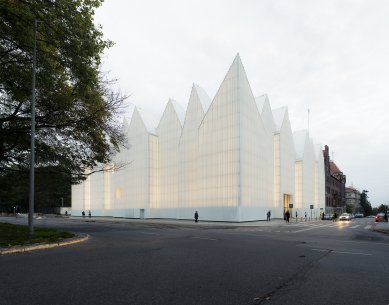
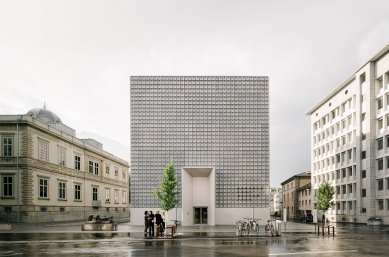
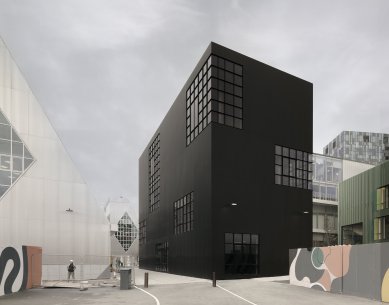
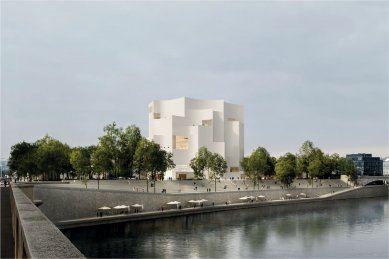
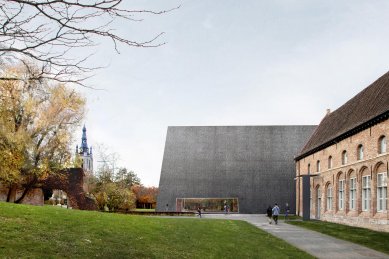
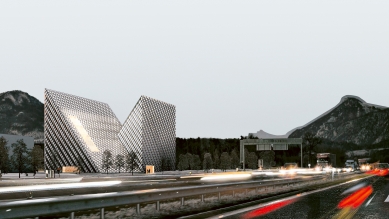
0 comments
add comment
Related articles
0
23.11.2022 | Filip Dujardin - Built / Build - exhibition at DUČB
0
27.01.2021 | The Fritze Höger Prize 2020 was awarded to the museum in Lausanne
0
08.01.2020 | The House of Art in Ceske Budejovice will present the work of Barozzi Veiga Architects and Petr Hajek
0
30.07.2016 | Expansion of the Art Museum in Chur by Estudio Barozzi Veiga
0
24.07.2011 | <Vinařské centrum Ribera del Duero from studio barozzi veiga>










